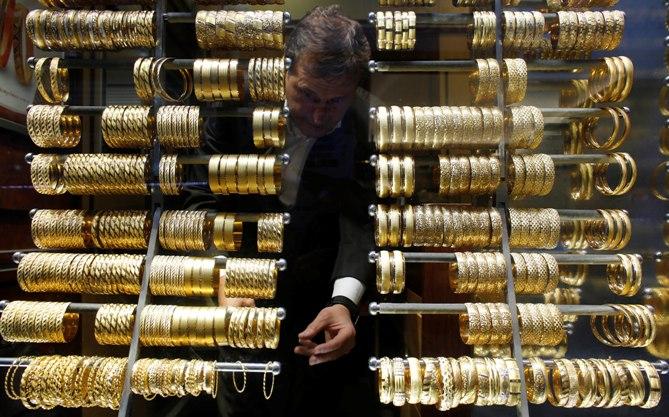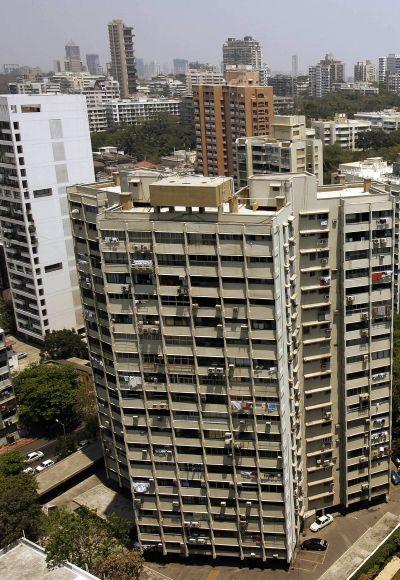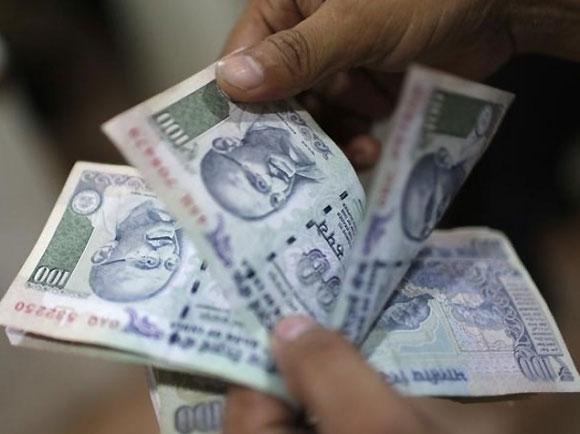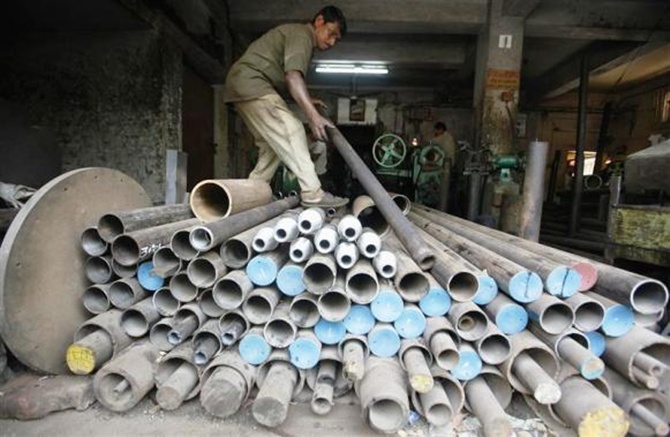Photographs: Murad Sezer/Reuters Krishna Kant and Dev Chatterjee in Mumbai
A real estate boom and Indians’ love for gold are proving costly for India Inc.
Since the 2008 Lehman crisis, there has been a sharp deceleration in corporate investments to the lowest level in 10 years, even as households stepped up investments in real estate and gold.
Capex by private companies declined to 9.9 per cent of gross domestic product in FY13 from a high of 18.8 per cent of GDP in FY08, according to figures from the Central Statistical Office.
Investments by households during the period rose to 15.9 per cent of GDP from 11.7 per cent in FY08.
Physical savings (real estate and gold) now account for a little over two-thirds of all household savings, up from 48 per cent on the eve of the Lehman crisis.
The share of financial savings (bank deposits, mutual funds, shares and debentures, insurance and pension funds) during the period declined to 32.4 per cent from 52 per cent in FY08.
. . .
India's corporate investment at decade's low
Photographs: Reuters
In contrast, a boom in corporate capex prior to FY08 was accompanied by a steady decline in the share of household investments in gross capital formation and a decline in the share of physical assets in household total savings portfolio.
Capex slowdown is most visible in machinery and equipment, bulk of the corporate investment.
It not only brought down the investment rate in the economy; productivity growth also slowed, a double whammy.
“But this slowdown is not evident in the headline investment numbers because even as corporate investment has witnessed a secular stagnation, it has been offset by a rise in household investment in real estate and gold.
But this is a numerical offset, not an economic one, given the unproductive nature of the latter.
Clearly, any sustainable recovery and pick-up in potential growth squarely hinge on when the corporate investment cycle turns around,” says Sajjid Chenoy of JP Morgan in a report dated January 26.
. . .
India's corporate investment at decade's low
Photographs: Reuters
The period also saw a gradual decline in corporate profitability, due to a mix of poor demand growth and rise in operating costs.
The operating margin of BSE 200 companies, excluding banks and finance, declined to 15.6 per cent in FY13 from 19.8 per cent of revenues in FY08.
This reduced the internal accruals available to companies for capex and other growth plans.
“After 2008, the terms of trade began to move in favour of farmers, landowners and rural peasants, who have a higher propensity to put their savings in real estate and gold.
In contrast, financial savers such as salary earners in urban India faced an income squeeze from slow economic growth and high consumer inflation,” says Dhananjay Sinha, head, institutional research, Emkay Global Financial Services.
This dried the flow of funds for corporate investment that is channelled through bank deposits, mutual funds, initial public offers and insurance companies.
In the past five years, rural income has grown faster than urban households due to a mix of higher food prices, spike in land prices, rise in minimum support price for foodgrain and higher public spending in rural areas on programmes such as the employment guarantee schemes and rural roads, among others.
. . .
India's corporate investment at decade's low
Photographs: Reuters
Besides, companies in many sectors are struggling with regulatory issues such as environmental clearances holding up project implementation.
“We are consolidating our operations after almost Rs 24,000-crore (Rs 240-billion) investments in the last few years.
“The biggest problem faced by companies is uncertainty over natural resources, government policies,” says D Bhattacharya, managing director of Hindalco Industries, India’s largest aluminum producer.
Analysts say a consistent rise in household savings in physical assets has also impacted demand, with many industries operating at capacity utilisation levels of between 70 and 75 per cent.
. . .
India's corporate investment at decade's low
Photographs: Reuters
With demand across the board being lacklustre, as shown by negative growth in manufacturing, there is little incentive for companies to invest.
“Investment is one the biggest growth drivers as seen in China where a large part of economic growth in last two decades was contributed by high investment rate,” says D R Dogra, managing director of Care Ratings.
“This can actually be replicated in any country. However, in India such a pattern has been uneven,” he adds.
Analysts are now pinning hopes in a shift in government’s fiscal policy towards investments and away from subsidies and handouts.
"We need a clear policy that encourages financial savings and discourages over investment in unproductive assets such as land, buildings and jewellery," adds Dhananjay.







article